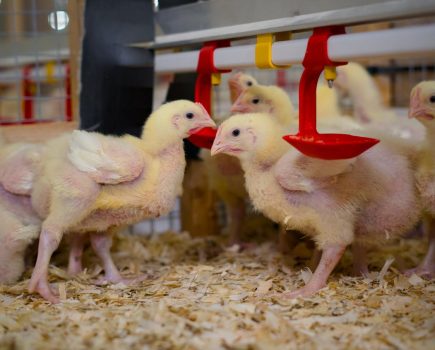A successful lambing season is paramount for any sheep enterprise, and abortion can be devastating explains Westpoint Farm Vets. Understanding the causes and implementing robust preventative measures are key to protecting your flock’s health and your bottom line.
Taming Toxoplasmosis: hygiene, control and vaccination
Toxoplasmosis, caused by Toxoplasma gondii, is a common cause of sheep abortion. This parasite spreads by infected cat faeces contaminating feed and bedding. Sheep act as hosts, leading to late-pregnancy abortions or foetal reabsorption. Live lambs are often weak.
While sheep can develop some immunity, an abortion storm can have a huge impact on lamb numbers. A multi-pronged defence combining stringent biosecurity with vaccination is crucial.
Vaccination is highly recommended for effective, long-term protection. Ewes should be vaccinated at least three weeks before tupping. Once vaccinated, protection lasts for at least two lambing seasons.
Identify and vaccinate ‘naïve’ ewes (those that have never been vaccinated or exposed). Discuss a strategic vaccination plan with your vet, especially for replacements.
Environmental control
Even with vaccination, vector control and stringent hygiene are vital:
- Cat and rodent proofing: Securely store all feed and bedding in cat and rodent-proof containers or wraps. Lockable bins are ideal.
- Farm cat management: Neuter farm cats to control their population and reduce parasite spread. Continue rodent control.
- Abortion management: Promptly remove any aborted materials. Present them to your vet for testing to identify threats on farm, then incinerate any not needed for testing.
Defence against other abortive diseases
While toxoplasmosis is a major concern, it’s vital to consider other potential causes of abortion.
Data-driven decisions and subsidised testing
Review your last lambing season. If you experienced more than a 2% rate of barren ewes or abortions, an underlying abortive disease is likely.
Many subsidised testing schemes are available for barren or aborted ewes. Discuss these with your vet. Testing helps identify common problems like enzootic abortion of ewes (EAE) and toxoplasmosis, informing breeding and vaccination strategies. Knowing the cause is also vital for human safety, as some abortive diseases are zoonotic.
Enzootic abortion of ewes
Enzootic Abortion of Ewes (EAE), caused by Chlamydophila abortus, is the most diagnosed bacterial abortion cause in sheep. It leads to late-pregnancy abortions, spread by carrier sheep often introduced via purchased animals. Ewes may abort the year after exposure and can continue to do so in subsequent years.
The most effective weapon against EAE is vaccination. Ewes should be vaccinated a minimum of four weeks before tupping, making timing critical. Revaccination is recommended every three to four years, and replacements should be factored into vaccine purchases.
Optimising ewe health and mitigating external threats
Beyond specific disease prevention, the overall condition of your ewes is paramount. Now is the ideal time to ensure your breeding flock is in peak condition:
- Culling: Cull ewes with poor teeth, poor body condition or a history of vaginal prolapse, poor mothering or mastitis.
- Nutrition: Address metabolic or nutritional imbalances that lead to lambing problems. Regular body condition scoring is essential.
- Trace element and metabolic profiling: Blood sampling can provide insights into supplementation needs and nutritional status, allowing for timely adjustments.
Lastly, ensure your tups are in top condition. Consider breeding soundness checks with your vet, assessing their body condition, teeth and feet before they join the ewes.
For more like this, sign up for the FREE South East Farmer e-newsletter here and receive all the latest farming news, reviews and insight straight to your inbox.







